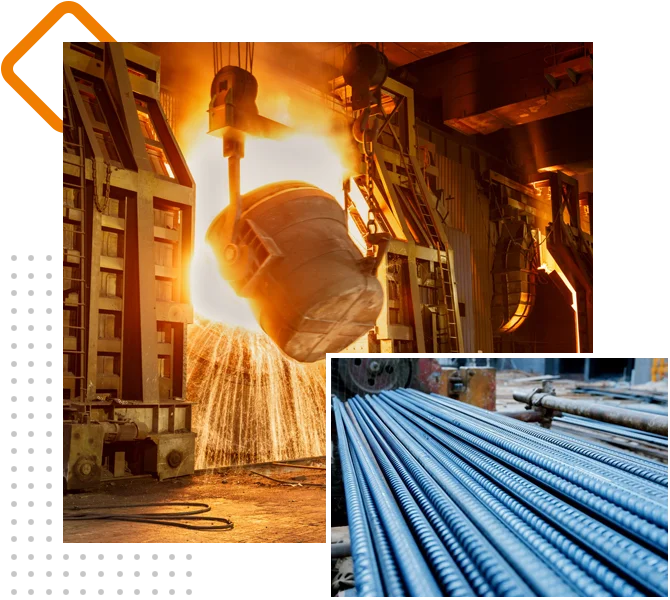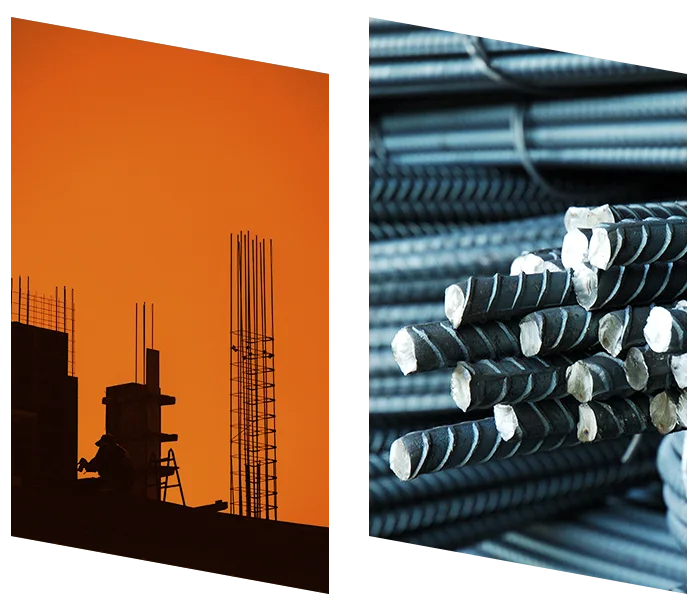Definition of good quality Steel/Rod in Bangladesh
Are you looking for good-quality steel/rods in Bangladesh to build a building, road, or bridge? Of course, you can find it in Bangladesh. But before buying steel/rods, you should know the definition of good-quality steel/rods. When you gather knowledge about it, nobody can misguide you. Read this blog to learn more about good-quality steel/rods and this industry.


What is Steel and Rod?
Definitions of steel and rod are almost the same, but there are some differences. The distinctions between steel and rod are mentioned below:
- Steel: is a specific type of alloy, primarily composed of iron and carbon. It is characterized by its strength, durability, and ease of formation. Steel is an umbrella term for a wide range of alloys with varying carbon content and additional alloying elements, resulting in a variety of properties and applications.
- Rod: is a generic term for a long, slender piece of material, typically cylindrical or rectangular in shape. Rods can be made from various materials, including steel, aluminum, bronze, or wood. In the context of metalworking, a "steel rod" specifically refers to a rod made of steel.
How do we recognize good-quality Steel/Rod?
The quality of steel or rods can be assessed based on various factors, and the specific requirements depend on the intended use. Here are some key considerations for determining good quality steel or rods:
- Chemical composition: High-quality steel should have a well-defined chemical composition with the right balance of elements. The composition affects the steel's strength, hardness, and other mechanical properties.
- Strength and hardness: The strength of steel is crucial for many applications. Different grades of steel are designed to meet specific strength requirements. Hardness is another important factor, especially in applications where wear resistance is essential.
- Durability and corrosion resistance: For outdoor or corrosive environments, steel with good corrosion resistance is essential. Stainless steel, for example, contains chromium to provide corrosion resistance.
- Manufacturing process: The method of manufacturing can influence the quality of steel. Processes such as hot rolling, cold drawing, or heat treatment can affect the final properties of the steel.
- Certification: Look for steel that meets industry standards and has appropriate certifications. In many countries, there are standards and certifications (e.g., ASTM, AISI) that indicate the quality and performance of steel.


Other features of good quality Steel/Rod
Good quality steel/rod has many characteristics. Five reasons have been mentioned in the above section. Five more features are highlighted in this section:
- Surface finish: A smooth and clean surface finish is often desired, especially in applications where surface roughness can impact performance.
- Uniformity and consistency: High-quality steel should exhibit uniform properties throughout the material. Inconsistencies in composition or structure can lead to weak points in the material.
- Appropriate grade for the application: Different applications require different steel grades. For example, structural steel, tool steel, and stainless steel serve different purposes and have distinct properties.
- Testing and quality control: Reputable manufacturers subject their steel products to rigorous testing to ensure they meet specified standards. This may include testing for strength, hardness, ductility, and other mechanical properties.
- Cost consideration: While cost is not a direct measure of quality, extremely low-cost steel may raise concerns about its manufacturing processes and overall quality. High-quality steel typically involves controlled manufacturing processes and quality materials, which may result in a higher cost.
Need to know these characteristics to identify good-quality Steel/Rod
Many characteristics identify a good quality Steel/Rod. 10 features are highlighted in the above two sections. 5 more features are highlighted in this section.
- Machinability: In applications where the steel needs to be machined or fabricated, good machinability is essential. Some steel grades are designed to be easily machined, while others may pose challenges during the machining process.
- Weldability: If the steel will be used in welding applications, its weldability is a crucial factor. Certain steels are specifically designed for welding, with properties that allow for strong and reliable weld joints.
- Temperature resistance: For applications involving high temperatures, such as in the aerospace or automotive industries, the steel must maintain its structural integrity and mechanical properties under elevated temperatures. This is often referred to as high-temperature or heat resistance.
- Formability: In applications where the steel needs to be shaped or formed into specific configurations, such as in the automotive or construction industries, formability becomes a critical factor. Certain steel grades are designed to be easily formed without compromising their structural integrity.
- Magnetic properties: Some applications, such as those in the electronics industry, may require steel with specific magnetic properties. Understanding whether the steel needs to be magnetic or non-magnetic is important in such cases.

Ending
Chakda Steel & Re-Rolling Mills (Pvt.) Ltd. is a leading steel company in Bangladesh. It has been operating in this industry for 30 years with fame and reputation. Since 1992, they have been producing good-quality steel/rods. For this, the slogan of this company is 'Committed For Better Steel
Know More